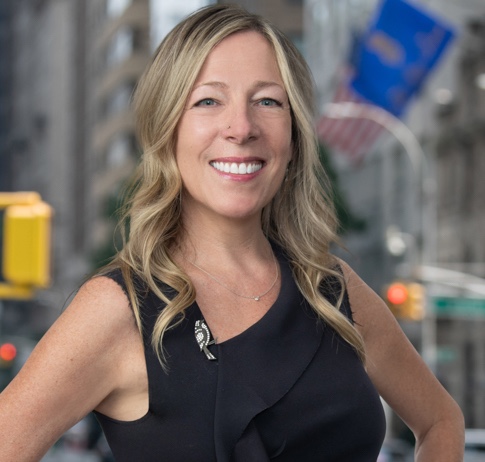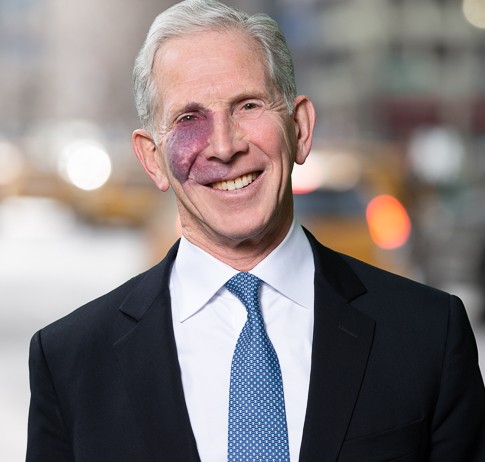Article
Caught between the court and the court of public opinion
4 April 2025 | Applicable law: US | 2 minute read
This article discusses the legal feud between Blake Lively and Justin Baldoni. It looks at the judge's directive to limit public commentary, methods on both sides of the Atlantic to curb media excesses, the job of the jury, and the role of media influence in high-profile celebrity cases.
The legal battle between Justin Baldoni and Blake Lively may have captivated more public attention than the movie itself, layering legal issues upon media spectacle. The stage is now set for a showdown in the U.S. District Court for the Southern District of New York as the two main protagonists are pitted against each other in vituperative litigation.
On the one hand, Lively brings claims for sexual harassment, unprofessional on-set behavior, orchestrating a retaliatory and reputation-damaging smear campaign, and defamation. Hitting back, Baldoni counter sues in defamation, civil extortion, false light invasion of privacy, and interference with economic opportunities as he alleges that Lively conspired to damage his reputation and seize creative control of the movie.
Little wonder then, given the celebrity of the parties and the salacious nature of the accusations, that the claims have whetted the public appetite for color and context. Which the parties’ attorneys have been only too happy to serve up.
Lively’s lawyers have described Baldoni’s claims as “another chapter in the abuser’s playbook” as they attack his alleged public relations smear campaign to rubbish her reputation. Baldoni’s attorneys have cast their net of accusations wide, to include Lively’s husband, Ryan Reynolds, also attacking Lively’s publicist for spreading “malicious narratives”.
All good media fodder, the gems from the lips of Lively’s camp and the pearls from the mouth of Baldoni’s attorneys making sparkling copy for the starstruck eyes of their readers.
Beyond the mainstream media, the “he said she said” narrative has been chewed over and regurgitated on social media by fans on either side of the divide, until the wheat ears of truth are hard to distinguish from the chaff.
The truth should ultimately be exposed at trial – and in what we expect here, to be an explosive trial – not in the run-up to trial in any media musing, online gossip or social media speculation.
The proper venue for deliberation, adjudication and ultimate vindication, is the court, and not the court of public opinion. It will be if Judge Liman has anything to say about it. And say something about it, the judge has, as he calls time on extrajudicial comments.
Media marching orders
On Feb. 3, 2025, Federal judge, Judge Lewis J. Liman issued an order restricting public statements by both parties’ legal teams, citing New York's Professional Conduct Rule 3.6 which is aimed at limiting extrajudicial comments that could influence legal proceedings, including by prejudicing the jury pool.
Few of us these today can completely avoid the news, whether we unfold our printed newspaper over our morning coffee, flop onto the couch for a spot of TV, or scroll as we stroll, on our smart phones. As we watch, read and learn, we assume, decide and judge, acting as only partially informed jurors in the court of public opinion. But is there any harm to be done? After all, this is, for us at least, merely entertainment?
In the first half of 2022, we were treated to a real humdinger of a court drama as the dirty linen of one married couple was washed, hanging them out to dry, on court TV. Mr. and the former Mrs. Depp were pitched in a court room drama as enthralling to the public as the Lively – Baldoni case is likely to be.
Daily doses of evidence allowed us an intimate view into their lives, and the law. While equal measures of memes – for example, the heard-ridiculing “my dog stepped on a bee”, and the largely Depp-applauding “mega pint” – filled the online ether.
In the Virginia courtroom, Mr. Depp ultimately won, restoring a reputation dashed on the rocks of an earlier English decision wherein the court preferred Heard’s evidence to his, in respect of similar allegations that he was a “wife beater”.
And it’s largely considered too, that he won in the court of public opinion. Arguments arose over the unbalanced lambasting of Heard, damaging her further with the public, her legal team advancing that the Virginia jury itself was swayed at least in part, by the overwhelming social media support for Depp.
While that jury, as others, was instructed not to consume external media and to decide only on the evidence in court, it was argued that the frenzied atmosphere outside court may have been impossible for the jury to ignore.
Spectacles such as this, and imbalance and unfair treatment of the parties, is what the Lively – Baldoni judge will wish to avoid. A disinclination to hush the mouths of attorneys, and the reporting media, is consistent with the First Amendment, which protects the right to freedom of speech.
But where there is a judicial concern in high-profile cases that public discourse risks undermining judicial impartiality, the greater good may be for a gentle judicial finger to be pressed to the lawyer’s lips.
In a case such as this, where the lawyers have not been backwards in coming forwards to comment on their client’s cases, limiting their public commentary may ensure that evidence and arguments are properly evaluated within the hallowed halls of the court, free from external pressures.
Transatlantic variance
Protecting the legal process from outside influence is a dish savored by courts on both sides of the Atlantic. Indeed, the power in the U.S. derives from rules of 18th century England, whereby disobedience of court orders was considered to be a contempt of the King himself. However, the offering is served up differently on both sides of the Atlantic.
While each legal system seeks to balance the rights to free speech, reputation and a fair trial, like Alice’s drawing-room in Lewis Carroll’s Through the Looking Glass, American and English media laws often “go the other way.” In the U.S. - and absent orders such as that of Judge Liman - media reporting of a high-profile trial is largely given free rein, respectful of the First Amendment right to freedom of speech.
Where there is a risk of undue influence through reporting, it is participants in the case – the lawyers and the jurors – rather than the press who are the avenue for addressing that risk. Before and during trial, lawyers are restricted in what they can say to in the media, and during trial it is the handful of folk chosen as jurors, and not society as a whole, who are reminded to focus on the evidence in court and not consume stories in the news.
A jury may even be confined to a media-free zone, sequestered for the length of the trial, to prevent any lapse of memory, as they while away the evenings after court, and forget that they are prohibited from tuning in to media and public speculation, when they turn in for the night.
In England however, it is the media and the wider pool of society which is constrained by virtue of the Contempt of Court Act 1981. This wraps trials in a protective swaddling prohibiting publications which may create a substantial risk of serious prejudice to the proceedings within the active period - from arrest or charge in a criminal matter or when a civil case is listed for a hearing or trial, to the ultimate conclusion of a verdict or appeal.
During this time, the media is permitted only to publish factual, non-prejudicial information including a fair and accurate report of open court proceedings, and thus sparing the jury pool - and consequently the entire sea of society from which the jury may be fished - the distraction of anything other than evidence in court.
Such wide restrictions don’t trouble American readers. Rather, “Voir dire” proceedings test any personal prejudices of potential jurors before they are chosen, while orders such as that of Judge Liman can restrict further what the parties’ attorneys are permitted to put into the public domain.
The parties consented to Judge Liman’s order in lieu of an accelerated trial date shortening the period of potential pre-trail taint at the expense of considerable pressure to prepare for trial. The order, which simply required counsel to abide by their existing ethical obligations under Rule 3.6, is not unique.
A 2019 personal injury case, wherein a retired optometrist took out a fellow skier, was available to the public via a live feed. The judge implemented a “decorum order” on the media present in the court room, including requiring the cameras not repeatedly to focus on the defendant. Why would they?
Because she was none other than Shakespeare In Love actor, and Goop brand founder, Gwyneth Paltrow. In multiple recent trials of a different sort of celebrity, the president of the United States, similar court orders restricted what the parties could say to the press and on social media.
Even with these general rules, and specific orders, few legal systems are foolproof. The law Commission in England is expecting to publish a final report on its consultation in late 2025, after glitches in the strict liability set up were highlighted after an article in the New Yorker, published online in the US but available in a few print copies in the UK, featured a story about a British nurse awaiting the results of her appeal against convictions for child murder, thus during the strict liability period.
In the US, as the Depp - Heard case shows myriad mouthpieces other than those of the attorneys gaped wide to report and repeat, discuss and dissect, expound upon and exaggerate evidence and gossip alike. And it goes without saying that any order to curtail the chatterati, whether parties, their attorneys or the media, is only as good as the receiving party’s preparedness to comply – and the court’s preparedness and ability, to sanction non-compliance.
Life and law in the public eye
High profile legal actions can blur the lines between legal strategies and public relations campaigns. Both Baldoni and Lively are well-aware of and versed in the benefit of positive media and have well-oiled PR machines working alongside them.
While respectfully voicing their legal complaints in filings and evidence in court, they have been shouting their disagreements through the megaphone of the media, amplifying narratives but potentially complicating efforts to maintain judicial impartiality – and irritating the judge in the process.
Even in celebrity cases, whether in strict liability media-deprived England or free speech flag waving, self-policing America, we hope to trust jurors to do their civic duty. After the Paltrow case, one juror told ABC News, “I think it’s important that the public doesn’t think that this was a win because Gwyneth’s a celebrity. This is based on the evidence. This is based on the law.”
For Lively and Baldoni, this too should be about the evidence. It should be about the law. And perhaps with directive from the judge, it will be.
Amber Melville-Brown is partner and global head of the media and reputation practice at Withers. Martin Auerbach is of counsel and leads Withers’s white collar and investigations practice at the firm.
"Reprinted with permission from the [March 26 edition of the “The New York Law Journal”] © 2024 ALM Global Properties, LLC. All rights reserved. Further duplication without permission is prohibited, contact 877-256-2472 or asset-and-logo-licensing@alm.com."

